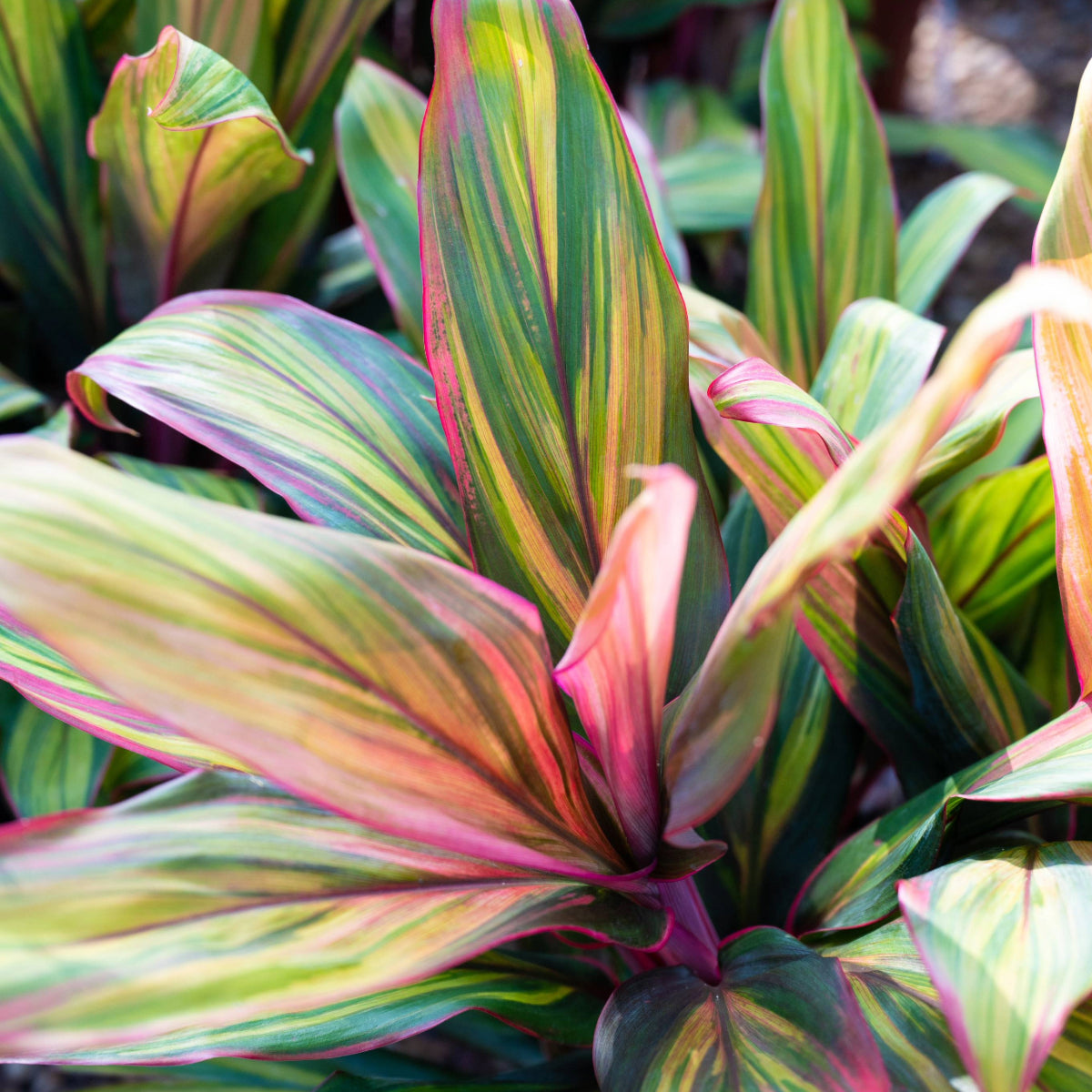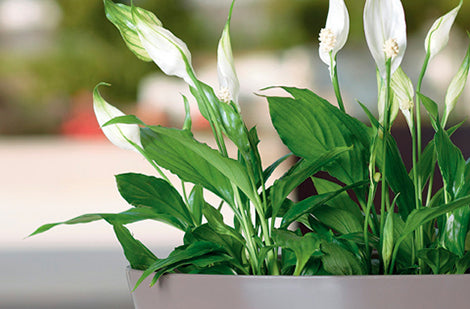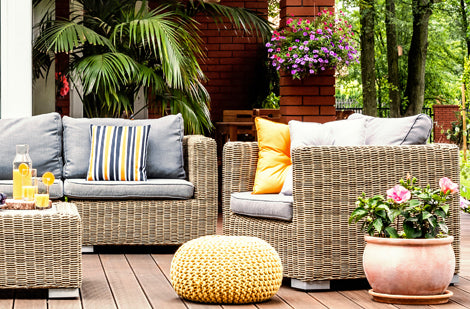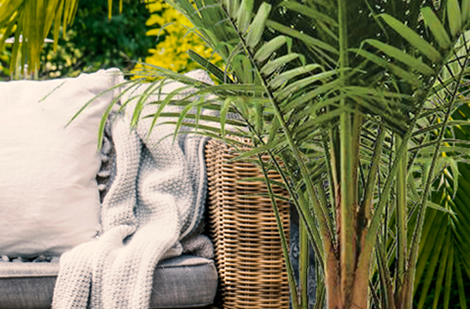Cordyline fruticosa 'Harlequin'
Cordyline ‘Harlequin’ - Hawaiian Ti Plant
Cordyline ‘Harlequin’ - Hawaiian Ti Plant
Exposure
- Bright brightness without direct sunlight
- Medium brightness without direct sunlight
- Medium brightness
Rusticity
- Bright multi-coloured foliage
- Dramatic tropical touch
- Intense colours guaranteed
- Easy to maintain
- Ideal for narrow corners
The Cordyline fruticosa 'Harlequin', commonly known as Harlequin Hawaiian Ti Plant or Ti Plant, is a particularly striking tropical indoor plant, celebrated for its vibrant and intense foliage colours. Its large, broad leaves are distinguished by a spectacular blend of green, cream, pink, purple, and deep red hues, often with accentuated shades and edges. This plant brings a dramatic and exotic touch to any indoor space, evoking the ambiance of tropical climates. Easy to care for and offering a constant visual spectacle, the 'Harlequin' is an excellent choice for those looking to add colour and texture to their plant collection.
Key Features
- Foliage: Large, elongated, evergreen leaves, displaying a spectacular and captivating mix of green, cream, pink, purple, and deep red. Colours are more intense in bright light.
- Habit: Upright, bushy, forming an elegant clump with a woody stem that develops with age.
- Growth: Moderate.
- Care: Easy to moderate.
- Appeal: Primarily cultivated for its spectacular, multicolored, and vibrant foliage.
Care Tips
- Light: Prefers bright indirect light for its most intense colours. Tolerates partial shade. A bit of direct morning or evening sun can enhance the hues, but avoid intense afternoon sun that could scorch the foliage. Good light is crucial for maintaining colours.
- Watering: Water when the top third of the potting mix is dry to the touch. Keep the soil consistently moist, but never waterlogged to prevent root rot. Reduce watering in winter.
- Soil: Requires well-draining soil rich in organic matter. A tropical plant mix is ideal.
- Humidity: Appreciates average to high ambient humidity. If the air is too dry, leaf tips may turn brown.
- Temperature: Prefers warm temperatures, between 18°C and 27°C (65°F and 80°F). Avoid temperatures below 10°C (50°F) and cold drafts.
- Fertilization: Fertilize in spring and fall with a balanced fertilizer. During the active growing season (spring and summer), monthly fertilization is beneficial.
Height and Width (Estimates)
- Height: Can reach 90-120 cm (3-4 feet) indoors.
- Width: Approximately 30-90 cm (1-3 feet).
Caution: May be toxic if ingested (for humans, cats, dogs, horses).
Plant details
Dimensions
Dimensions
Characteristics
Characteristics
Habit:
- Upright
Flowering colours:
Plant needs
Plant needs
Watering:
- As soon as the soil begins to become dry
Maintenance:
- Moderate
Soil requirement:
- Well-drained
- Potting soil for tropical plants
Features
Features
Resistance:
Attract:
- --
Use:
- Table
- Floor
- Summer terrace
- Featured plant
Attribute:
- Flamboyant Leaves
- Moderate Growth
- Evergreen Foliage

Related articles
-

Potting House Plants: which pot to choose
Read the articleBien qu'une plante puisse passer plusieurs mois et parfois même plusieurs années dans le même pot, avec le temps ses racines envahissent tout l'espace disponible. Il devient important de choisir...
-

Moving Up a Level: Advanced Guide to Repotting ...
Read the articlePropagate your violets! Discover the simple cutting method, the secret to the perfect soil mix, and how to fight mealybugs.
-

The Complete Guide to Buying and Caring for Ind...
Read the articleBringing a touch of nature to your home with plants is a great idea! Not only do they beautify your living space, but they also help purify the air. However,...
-

Build Your Own Terrarium: The Complete, Easy Gu...
Read the articleThe terrarium is the perfect addition to your decor! Learn how to easily create your own miniature garden with our complete guide.
-

Create a garden with succulents
Read the articleLes plantes grasses n’ont pas leur pareil pour créer des arrangements à la fois impressionnants par leurs couleurs, leurs formes et leurs textures et faciles à entretenir. Qu’on les agence...
-

Houseplants to discover - Butterfly Palm or Are...
Read the articleDypsis lutescens, anciennement Chrysalidocarpus lutescens
-

Calathea: The Essential Guide to Mastering the ...
Read the articleCalathea is a stunning addition, but it's demanding! The key to its success? Humidity. Find out why tap water and dry air are its worst enemies and how to give...
-

Jade Plant (Crassula): The Easy-Care Succulent ...
Read the articleThe jade plant is a must-have! Learn all the secrets to caring for this resilient succulent that naturally grows into an elegant miniature tree.
-

Madagascar Dragon Tree: Embrace Effortless, Gra...
Read the articleAdd a modern touch to your home! The Madagascar Dragon Tree is low-maintenance, perfect for beginners, and stands out with its slender look and two-toned foliage.
-

Aspidistra: The "Cast Iron Plant" Indestructibl...
Read the articleDon't have a green thumb? The Cast Iron Plant is for you! Tolerant of shade and missed waterings, it's perfect for lobbies and offices. Learn how to maintain its leathery...
-

Embrace the Fern: The Champion of Shade and Tro...
Read the articleGot a dark corner? Ferns are your allies! They are easy to care for if you master one factor: humidity. Learn how to water them perfectly for spectacular and full...
-

-

Kalanchoe: The Secret to Massive Blooms That La...
Read the articleNeed lasting colour? The Kalanchoe blooms profusely for over two months! An easy succulent that tolerates neglect and adds a vibrant touch to your home.
-

Snake Plant: The Unkillable Houseplant, Perfect...
Read the articleThe Snake Plant is an ideal houseplant for everyone, whether you're a beginner or an experienced gardener. Its resilience, ease of maintenance, and decorative appearance make it an essential choice...
-

Edible Flowers: Top 5 for Garden and Kitchen
Read the articleOffrant une belle gamme de couleurs, de formes et de textures, les fleurs comestibles enthousiasment les amoureux de jardinage et de cuisine.
-

Tropical Flowering Plants: A touch of the exoti...
Read the articleLes plantes tropicales à fleurs ont tout pour faire tourner les têtes! Colorées, odorantes, généreuses, elles n’ont pas leur pareil pour égayer une aide de repos, un balcon, une terrasse....
-

Keep a palm tree on the terrace - why not!
Read the articleDifficile de résister à l’appel des tropiques quand le soleil et les températures clémentes se pointent le bout du nez. Rien de mieux qu’un palmier sur la terrasse ou le...
-

Bring Your Plants Indoors for Winter: The Compl...
Read the articleDon't get caught by the first frost! Prepare your outdoor plants for winter with our complete guide.
-

When and how to repot house plants
Read the articleAlthough a plant can spend several months and sometimes even several years in the same pot, over time its roots invade all the available space.
-

Choosing the best potting soil for your indoor ...
Read the articleDon't let your plants stall: learn how to choose the ideal potting mix and optimize drainage for vibrant foliage.


























